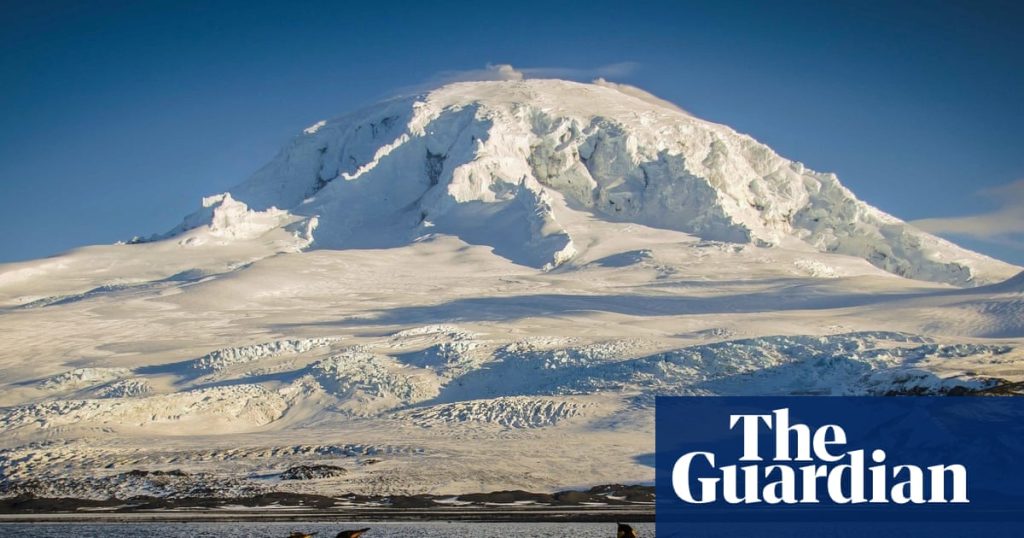Glaciers on a remote Australian sub-Antarctic island are shrinking rapidly, losing almost a quarter of their size in just 70 years, with researchers fearing glaciers on a neighbouring peninsula may have already disappeared.
Analysis of aerial photographs and maps going back to 1947 were combined with satellite data to track melting on 29 glaciers on the uninhabited wilderness of Heard Island, 4,100km south-west of Perth and 1,500km north of Antarctica.
Scientists said global heating was the most likely cause of the dramatic ice losses. Between 1947 and 2019, the island had warmed by 0.7C, while the area covered by glacial ice fell from 289 sq km to 225 sq km.
The most dramatic changes were recorded on the island’s east, in particular on Stephenson glacier, which has retreated almost 6km since 1947. In the last 20 years, the glacier retreated on average 178 metres a year, the research, published last week in the scientific journal the Cryosphere, found.
“Glaciers are extremely sensitive to small changes in temperature. As the air warms the ice surface gets closer to melting point,” said Prof Andrew Mackintosh, one of the paper’s authors and chief investigator at Monash University’s Securing Antarctica’s Environmental Future (SAEF).
“I’ve got no doubt the increase in temperature is primarily responsible for driving the glacier retreat. This shows that no place is free from the influence of climate change.”
On the neighbouring Laurens peninsula, where there are 11 small glaciers, the losses were even more dramatic. The 10.5 sq km of glacier ice that was there in 1947 was at just 2.2 sq km in 2019, the final year of data for the research.
“One or two of those glaciers may have already disappeared now,” said Dr Levan Tielidze, the paper’s lead author and research fellow at SAEF.
“They are small glaciers, but it’s a sign of what will happen in the future to the larger glaciers on Heard. These findings are a bellwether of change for our global climate system.”
Sign up to get climate and environment editor Adam Morton’s Clear Air column as a free newsletter
SAEF is now using climate models to understand what could happen to the island’s glaciers in the future under different levels of greenhouse gas emissions.
Mackintosh said: “Although this mapping shows stark glacier retreat and further ice loss is unavoidable, whether we retain glaciers or lose most of them entirely is up to humans and the greenhouse gas emission pathway we follow.
“It might also mean the difference between a future where biodiversity is devastated, or one where key parts are secured.”
Pristine but vulnerable
Heard Island made headlines earlier this year when Donald Trump listed it as being subject to a 10% trade tariff, despite nobody actually living there.
The pristine world heritage-listed island includes Australia’s only active volcano, Big Ben, and is a magnet for seabirds such as penguins, petrels and albatross, as well as elephant seals and unique slow-growing cushion plants.
Dr Justine Shaw, an associate professor at SAEF with the Queensland University of Technology, visited the island in 2003.
Sign up to Clear Air Australia
Adam Morton brings you incisive analysis about the politics and impact of the climate crisis
Privacy Notice: Newsletters may contain info about charities, online ads, and content funded by outside parties. For more information see our Privacy Policy. We use Google reCaptcha to protect our website and the Google Privacy Policy and Terms of Service apply.
after newsletter promotion
“It is an absolutely mind-blowing place – a glaciated island,” she said. “You’re on a beach surrounded by elephant seals with king penguins all around and then swooping down from the mountain are sooty albatross calling at each other.
“There’s this incredible wildlife and you have your feet in black volcanic sand. And it’s right at the southern limit of where plants can grow.”
The island has only one weed and no other invasive species, she said, which made it a perfect place to study the impact of climate change on the island’s biodiversity.
Shaw said the glacial retreat could be generating risks for the unique plant life – a combination of cushion plants, a cabbage, and the insects that live on them.
More bare ground exposed by the retreating glaciers created a chance invasive plants could take hold, she said.
The appearance of a growing lagoon at the bottom of Stephenson glacier could also be destabilising the ground used by birds for nesting.
“The lagoon that’s growing there is opened up to the sea. That will cause erosion,” she said.
The government’s Australian Antarctic Program this week announced two scientific visits to the island later this year – the first expeditions in more than 20 years.
Shaw is organising a team of scientists to travel on the expedition to study the island’s unique combination of insects and plants that she said existed nowhere else on Earth.
While she was not surprised the glaciers were retreating, she added: “What’s amazing is the rate of the melting – it is so rapid.”

